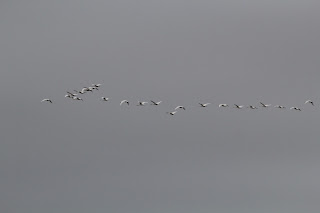Having been inspired by the spectacle of Kittiwakes on the River Tyne, I wanted to learn more about this charismatic and delightful species ...
Searching the available literature, the combination of the Poyser brand and the author John Coulson left me in no doubt that this was the book to read ...
Although I was aware that John Coulson was a significant name in ornithology I had no idea that his interest in Kittiwakes began as early as 1949 ...
For me, the book had a particular lure because his research was based primarily on Kittiwakes on the River Tyne. The scope of the work is global and includes some information about the other kittiwake species - Red-legged Kittiwake.
After the introduction there is a fascinating section on feeding methods and food of the species and an equally riveting discussion about winter oceanic distribution and movements ...
The following sections relate to their breeding biology and draw on research that the author conducted over more than a 50 year period ... I have to admit that I found much of this rather heavy going and graphs were abundant ...
... after this rather low point in the middle of the book there was more enlightening material, this time about colony structure and recruitment ... the author conducted extensive ringing studies and revealed the fluid nature of the breeding colonies - many birds do not go on to breed in their natal colony and many breeders move to other colonies, sometimes hundreds of miles away in subsequent seasons ...
... The name 'Tarrock' was not familiar to me - this refers to birds in their distinctive first-year plumage ... it is of Scottish derivation and is used to describe Arctic and Common Terns also ...
... The later parts of the work have interesting sections on 'Kittiwakes and humans' and Appendix 1 describes the history and methods used at the North Shields colony - this provided welcome answers to questions that had been in my mind throughout the book ... how do you catch a Kittiwake ? ...
The lovely illustrations are by Robert Greenhalf ...
... this monochrome painting shows a Red-legged Kittiwake behind and Black-legged Kittiwake in the foreground ...
Overall a very good read and wonderful in-depth study.





















































